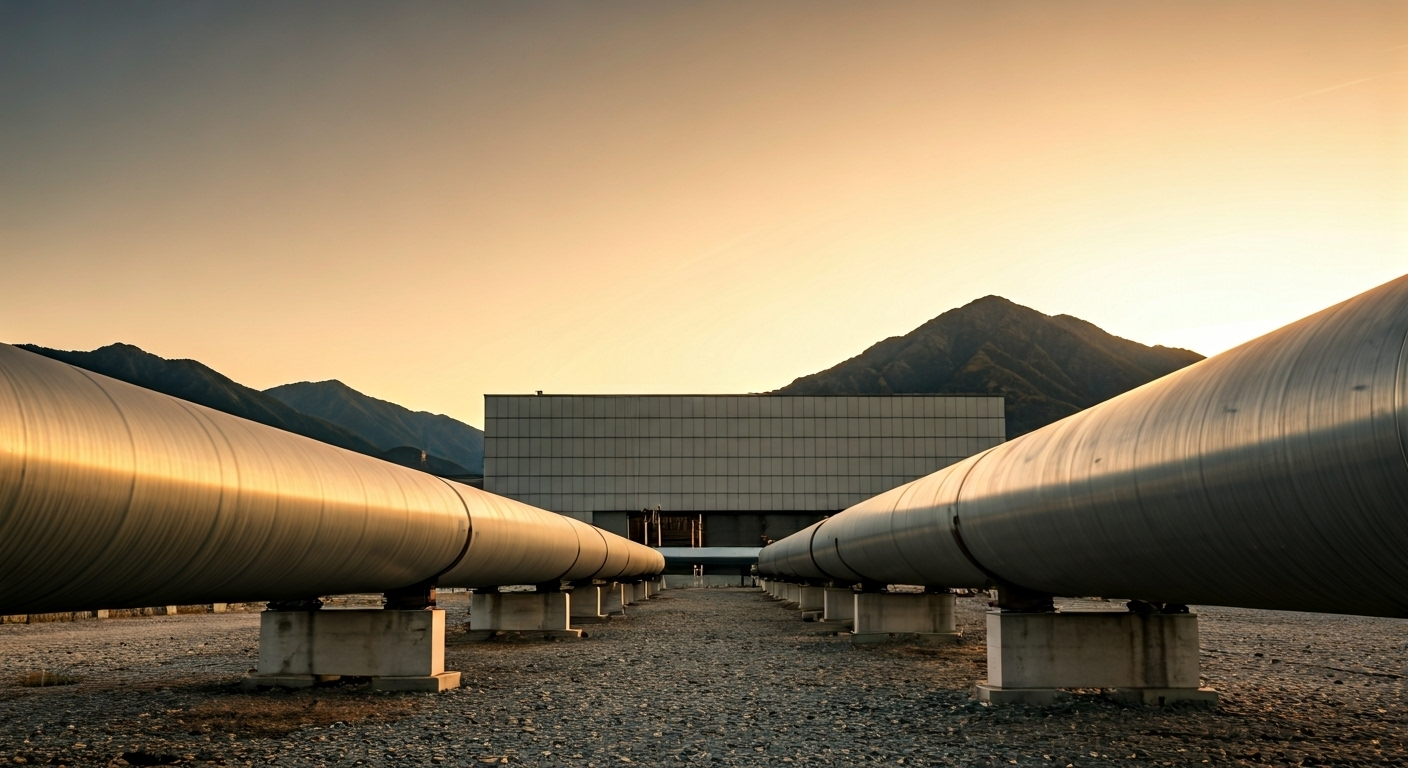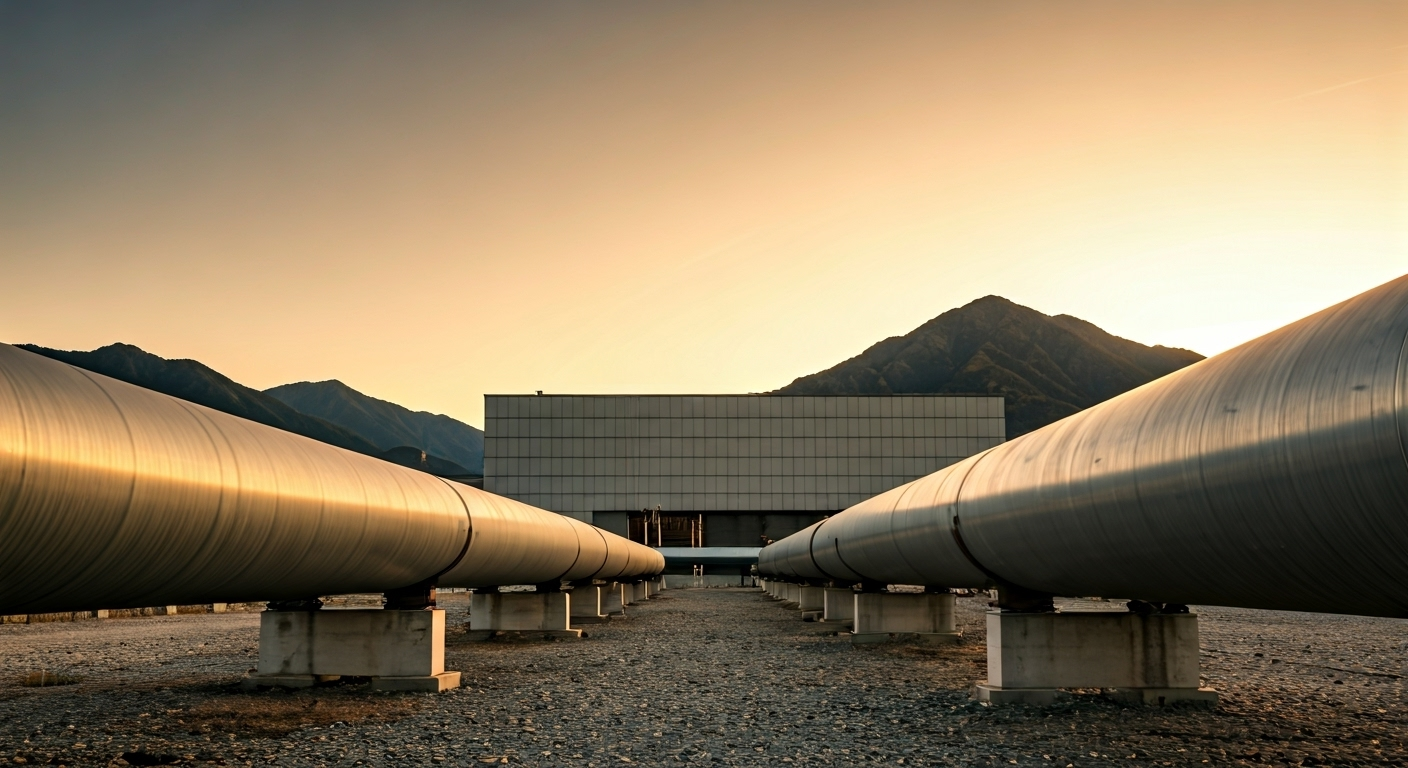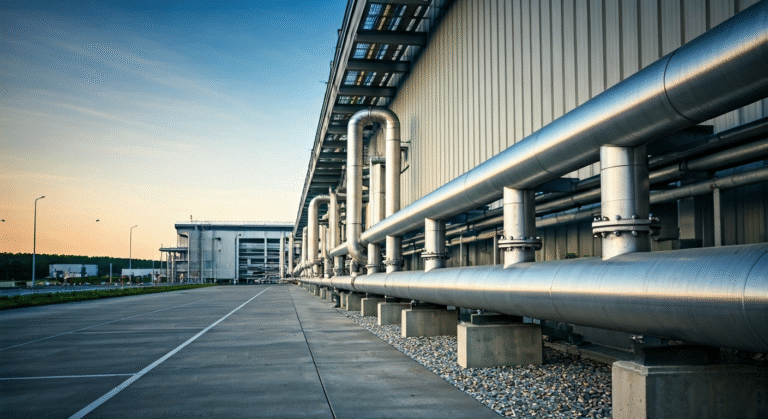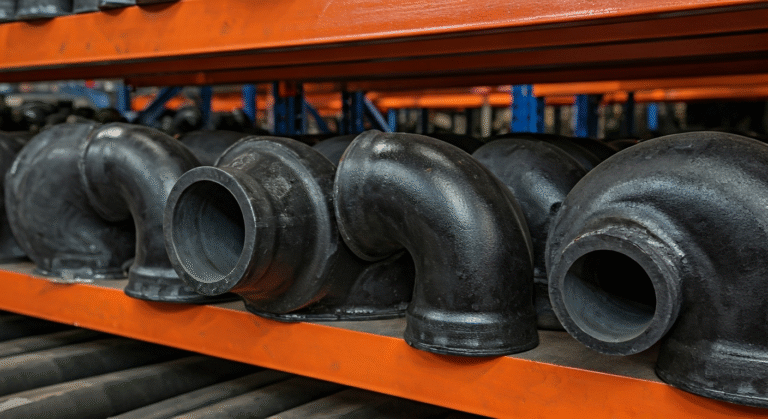-
Yinzhuang Industrial zone,Mengcun county,Cangzhou city,Hebei province,China

Pipe Bends: 3D vs 5D – What You Need to Know

Key Highlights
- Pipe bends, including 3D and 5D variants, are essential pipe fittings used to alter pipeline direction effectively.
- The bending radius is pivotal for efficient flow, with 3D bends being tighter and 5D bends ensuring smoother transitions.
- Stainless steel bends are commonly employed in long pipelines due to their durability and compatibility with varied applications.
- The choice between short and long-radius bends often depends on space availability and operational requirements.
- Both 3D and 5D bends are manufactured using advanced methods, ensuring compliance with ASTM standards.
Introduction
Pipe bends are important parts in any pipeline system. They help to change the direction of flow in the pipes. Unlike some other pipe fittings, these bends can have different bending radii like 3D and 5D. This lets you find the best fit for your project. These bends are very useful in industries that use long pipelines. They give more ways to make the pipeline work and keep the flow smooth. It is good to know about the features and uses of 3D and 5D pipe bends. This helps you choose the right option for your pipelines and what you need from them.
Understanding Pipe Bends and Their Importance in Chilean Industries

Pipe bends are important in many areas in Chile. These include the mining, energy, and construction industries. They help pipelines change direction smoothly. This lets materials move easily over long distances. Many of these bends are made from stainless steel. The bends are strong and made to fit different pipe sizes and setups.
In Chile, industries often need pipe bends for long pipelines. This is true when terrain changes or there are pressure changes in pipelines. Picking the right pipe bend is key. It helps the system work well and lasts a long time.
What Are 3D and 5D Pipe Bends?
The 3D and 5D pipe bends talk about how the bend radius, including long radius bends, compares to the diameter of the pipe. In a 3D bend, the radius is three times the pipe’s diameter. A 5D bend’s radius is five times the pipe’s diameter. For example, if you have a 10-inch pipe, the radius of a 3D bend will be 30 inches. The radius of a 5D bend in the same pipe would be 50 inches.
3D bends are smaller and work well when there is not much space. They help keep things working in tight spots. 5D bends give a smoother curve, so there is less resistance and not as much pressure loss. This is good for bigger jobs where pipelines are long. The bending for both types uses advanced tools, and both can be made to fit what each job needs.
Knowing about the bend radius helps you pick what works best in your setup. It makes sure the right kind of bend is used for different pipeline needs, and this is important when there are long pipelines or different sizes in use.
Why Bending Radius Matters for Pipeline Applications
The bending radius is an important part of pipeline engineering. It affects how well things flow in the pipelines and keeps the pipelines strong. When people change the pipeline direction with pipe bends, they help keep everything moving and reduce stress on the pipes. The bending radius is important for many reasons:
- Efficient Pipeline Direction: A larger bending radius helps things like liquids and gases move smoothly in the pipeline.
- Conformance to ASTM Standards: Some thicknesses are needed, so the pipelines stay strong, even with different stress in the pipe.
- Optimized Pressure Management: Using long-radius fittings keeps turbulence low. This helps slow down wear and tear on the pipelines.
- Space Accommodations: If someone uses a smaller radius, like a 3D bend, it fits well when there is not much space, and it still works well.
Choosing the right radius helps industries keep good performance. It makes sure that transport in pipelines is smooth, even when the pipeline network is Complicated.
Key Differences Between 3D and 5D Pipe Bends

The main difference between 3D and 5D pipe bends is their radius. A 3D bend has a short radius. It is good to use in places where space is tight. On the other hand, a 5D bend has a longer radius. This works better in long pipelines where you want smooth flow.
3D bends can fit better in small spots. 5D bends are better for long pipelines that need less flow blockage. Both types are used in different industries. They help people design pipelines in a way that suits their needs for space or fitting. This also helps run their work well and smooth.
Manufacturing Processes and Materials Used
Making 3D and 5D pipe bends needs special steps to get the right shape and to meet rules like ASME. Most pipe bends are made by hot or cold bending, and which one you use depends on the pipe diameter and the different dimension of mould used in the process. Hot bending works well for pipes over three inches. Cold bending is best for a diameter below two inches.
|
Material |
Manufacturing Process |
|---|---|
|
Stainless Steel, Carbon Steel |
Cold or Hot Bending Using Heating Equipment |
|
Butt Weld Fittings |
Lever Systems With Various Mould Dimensions |
|
ASTM-Compliant Steel Grades (e.g., WPB, X60, and others) |
Hot-Pressed Machines for Larger Radius Bends |
Using the right material with the correct bending process makes the pipes strong. They can then work well in many pipeline setups. These methods help pipes keep the right shape, radius, and diameter as needed by asme and astm standards.
Typical Applications in Mining, Energy, and Infrastructure Sectors
Pipe bends are very important in many areas that need strong pipelines. They are used in different ways:
- Mining Operations: In Chile, long pipelines often use 5D bends. This helps control how things flow.
- Energy Industry Applications: These bends help connect big oil and gas pipelines and keep things moving well.
- Infrastructure Developments: Steel pipe bends help pipelines go around anything in the way and keep it smooth.
- Australasian Pipelines: Long-radius elbows lower the wear and tear in large pipeline systems.
These bends help people move materials well and safely, even when pipelines have to cross tough ground with a long radius.
Conclusion
To sum up, knowing the differences between 3D and 5D pipe bends is very important when you want your pipelines to work well. The bending radius you use matters a lot in the way your pipeline performs. It can change how efficient, strong, and low-cost your pipeline will be. When you think about the needs of your project and pick the right pipe bend and radius, you are more likely to have pipes that last longer and do their job well. If you want help with choosing a bending radius or you need advice on a pipe bend for your pipelines, feel free to ask for a consultation.
Frequently Asked Questions
What is the main difference between a 3D and a 5D pipe bend?
The main difference between a 3D pipe bend and a 5D pipe bend is the bend radius. In a 3D pipe bend, the radius is three times the diameter of the pipe. For a 5D bend, the radius is five times the diameter. This change in bend radius affects how they fit and work in pipelines.
Which type of pipe bend is more suitable for tight spaces?
A short radius pipe bend, such as the 3D bend, works well in small or tight spaces. The bend has a compact shape. This helps the flow to change direction without needing a lot of extra room. It is a good choice for areas where the pipeline has less space because of the short radius.
Are 3D or 5D bends more cost-effective for large-scale projects in Chile?
For big projects in Chile and Australia, 5D bends help save money. They work well for long pipelines because they let things flow smoother. Even if you need custom parts, these bends last a long time and match ASME standards for hard pipeline jobs.
How does the choice of bend affect pipeline durability and maintenance?
Pipe bends such as 3D and 5D play a big part in how long a pipeline lasts and how much you need to work on it. Long-radius bends make less turbulence and wear in the pipe. This helps it last for a longer time. If you follow ASTM thickness rules, steel pipes can handle high pressure better. There will be less upkeep over time. So, the right radius and thickness are good for your pipes.
Can both 3D and 5D bends be used with all pipe materials?
Yes, you can use 3D and 5D bends with many kinds of pipe materials. The most common ones are stainless steel and butt weld fittings. These bends work for different pipe sizes and also suit different standard grades like ASTM. This makes them a good choice for many kinds of pipelines. You get more ways to lay out your pipes when you use them.


